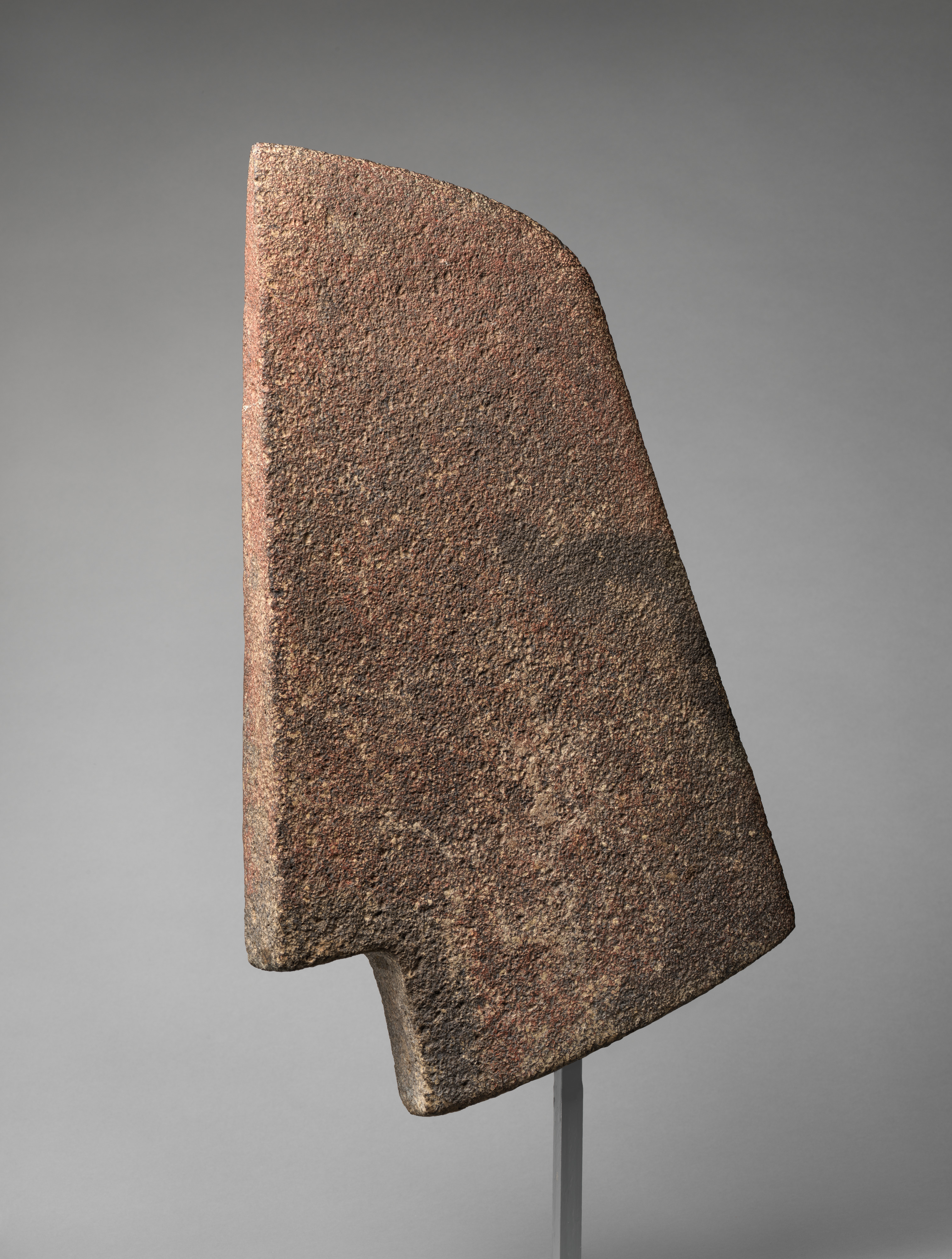Hacha
Not on view
To prevent injuries from contact with the solid rubber balls used in the Mesoamerican ballgame, players wore several items of protective gear (see MMA 1970.138a, b). Most commonly found in the Gulf Coast area of Veracruz, stone versions of this gear, commonly referred to as yokes, palmas, and hachas, emulate the equipment meant to protect the hips and torso. These objects were often carved with motifs that suggest that their purpose went beyond protection to declare personal or group status or identification. Abstract designs and human and animal forms are the most common, some clearly related to ritual aspects of the game, including human sacrifice (see MMA 1979.206.371). However, the traces of solid paint found on this and many other plain examples suggest that no further carved decoration was planned, and that their meaning may be inherent in their overall form alone.
In the absence of any modification or ornamentation, this hacha displays the pure ax-like shape that inspired the modern name for the form ("hacha" is Spanish for "ax"). The sharply-angled notch at the base would fit over the top of a yoke, the long edge extending outward from the wearer’s chest (see MMA 1978.412.15) toward his opponent. There are no visible holes, hooks, or means of attachment other than these notches on any known hachas or palmas. They may have been affixed to yokes with cloth or ropes, although it is difficult to imagine that they would have stayed securely in place during the active play of the game. This, along with their weight and cumbersome form, has led most scholars to believe that these are stone replicas of the protective gear made of cloth, padding, or leather used during the game itself, and that stone hachas, palmas, and yokes were worn, if at all, during ceremonies occurring before and after the games, or given as trophies to members or captains of the winning teams.
Patricia J. Sarro, 2022
Resources and additional reading
Goldstein, Marilyn. Ceremonial Sculpture of Ancient Veracruz. New York: Long Island University, 1988.
Earley, Caitlin C. "Stone Sculpture and Ritual Impersonation in Classic Veracruz." Metropolitan Museum Journal (2019), pp. 8-25, fig. 5.
Koontz, Rex. Lightning Gods and Feathered Serpents: The Public Sculpture of El Tajín. Austin: University of Texas Press, 2009.
Leyenaar, Ted J.J. Ulama, Jeu de Balle des Olmeques aux Azteques - Ballgame, from the Olmecs to the Aztecs. Lausanne: Musée Olympique, 1997.
Reents-Budet, Dorie (ED.) Painting the Maya Universe: Royal Ceramics of the Classic Period. Durham, N.C.: Duke University Press, 1994.
Scott, John F. "Dressed to Kill: Stone Regalia of the Mesoamerican Ballgame." In The Sport of Life and Death, The Mesoamerican Ballgame, E. Michael Whittington, ed, pp. 50-63. New York: Thames and Hudson, 2001.
Shook, Edwin M. and Elayne Marquis. Secrets in Stone: Yokes, Hachas and Palmas from Southern Mesoamerica. Philadelphia: American Philosophical Society, 1996.
Von Winning, Hasso and Nelly Gutiérrez Solana. La iconographía de la cerámica de Río Blanco, Veracruz. Mexico City: UNAM Instituto de Investigaciones Estéticas, 1996.
Whittington, E. Michael, ed. The Sport of Life and Death: The Mesoamerican Ballgame. New York: Thames and Hudson, 2001.
Due to rights restrictions, this image cannot be enlarged, viewed at full screen, or downloaded.
This artwork is meant to be viewed from right to left. Scroll left to view more.



